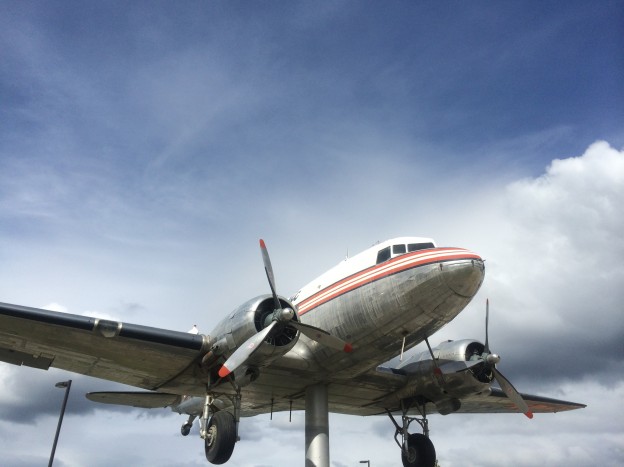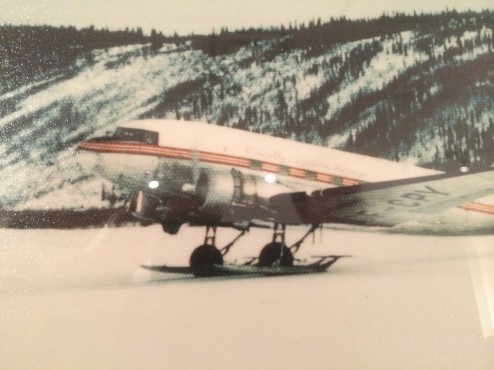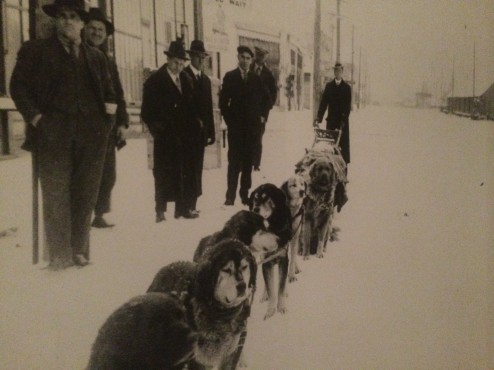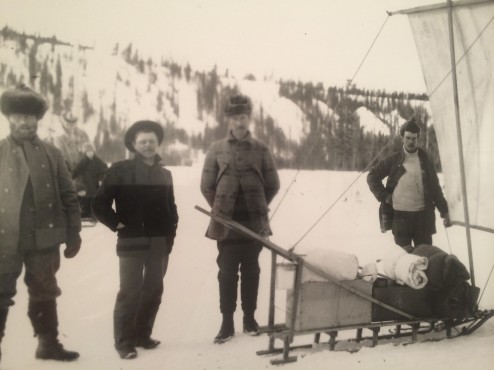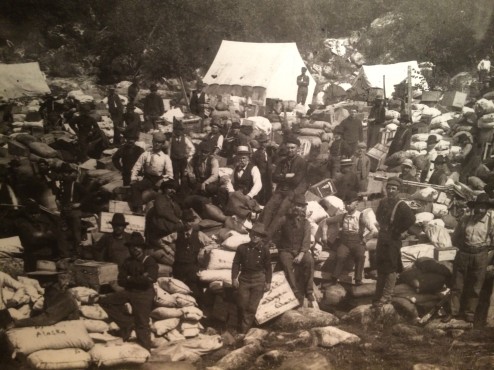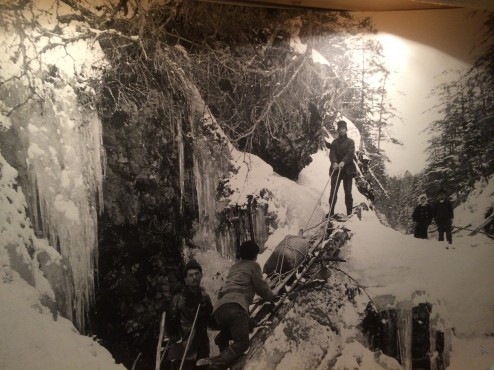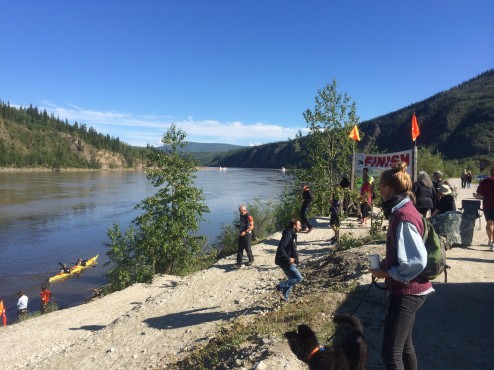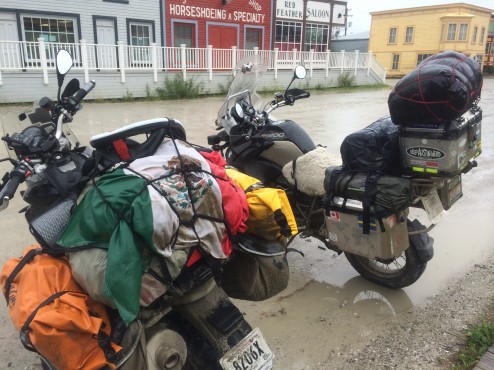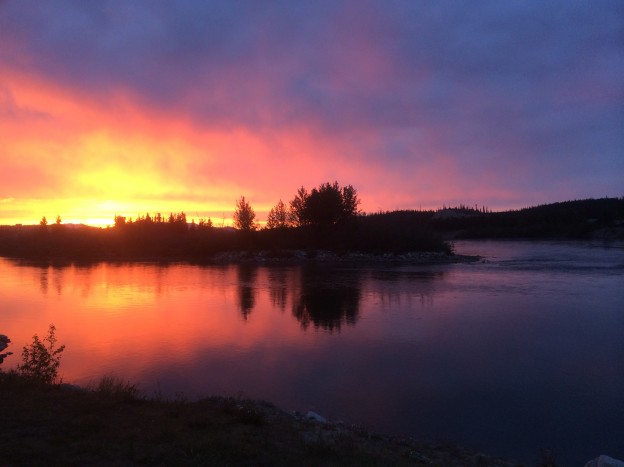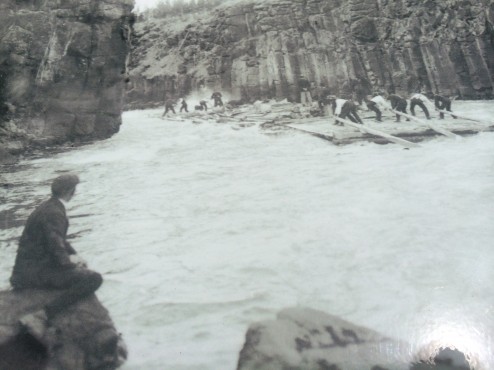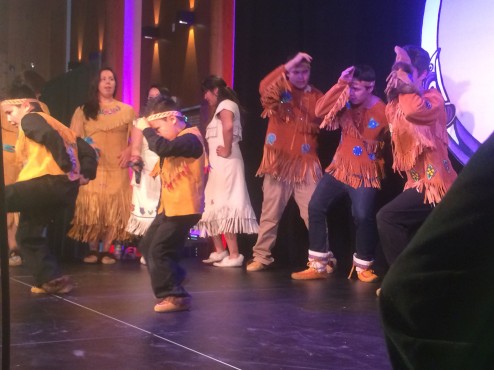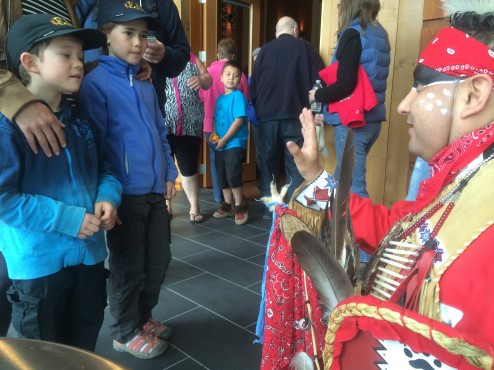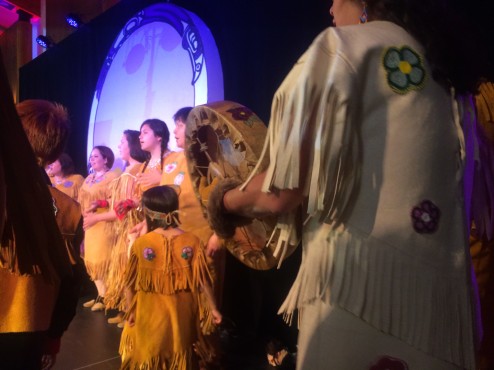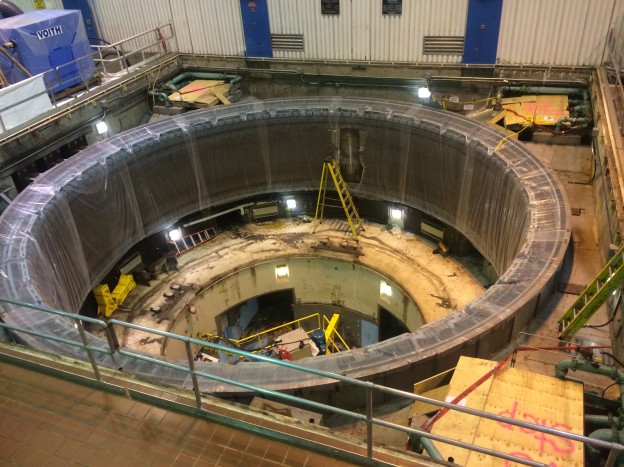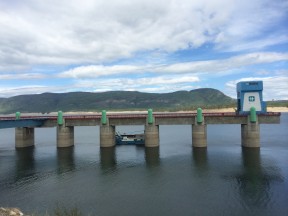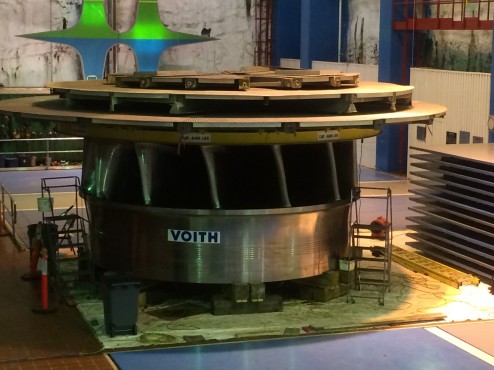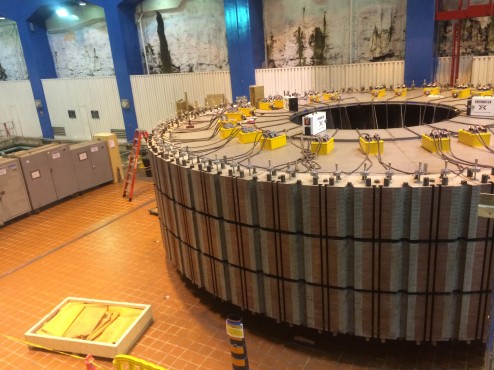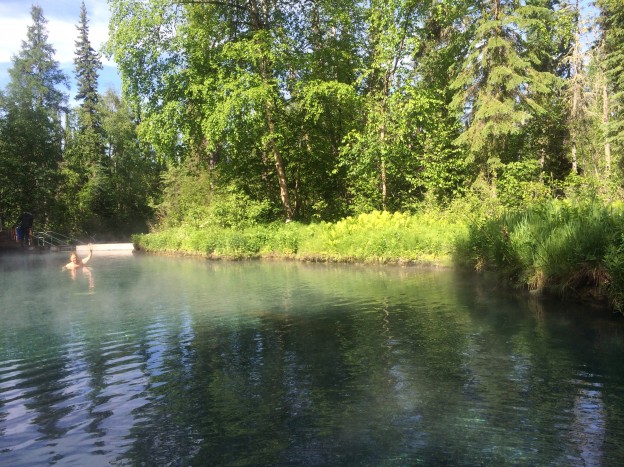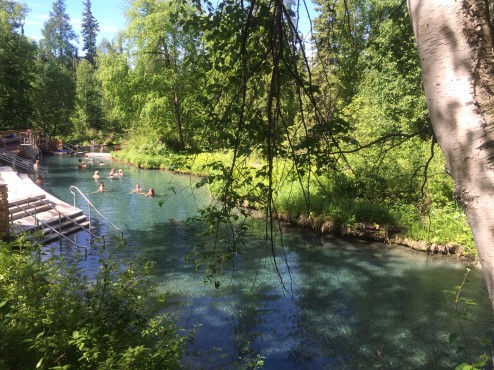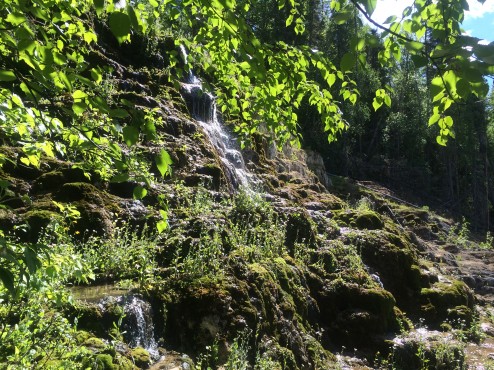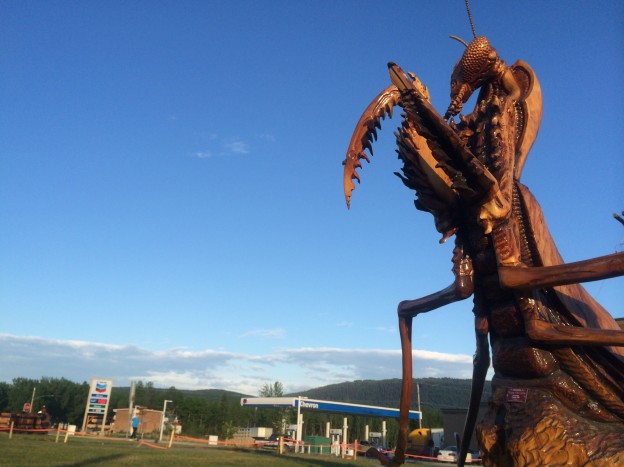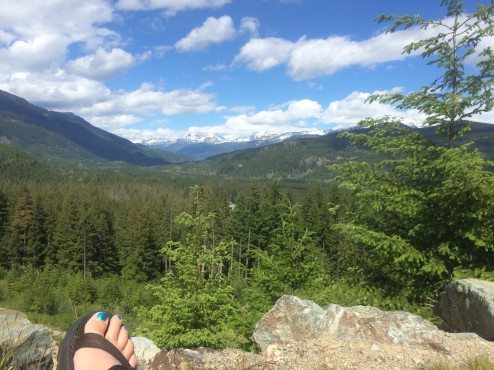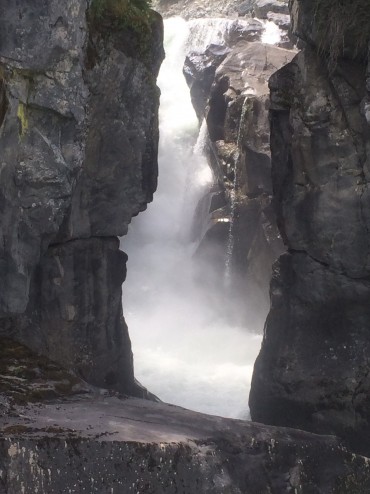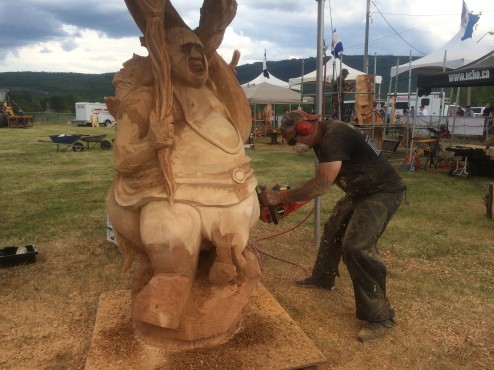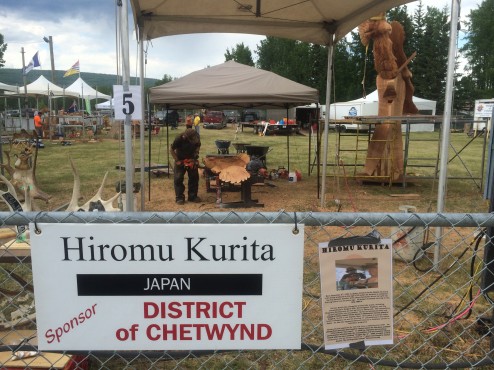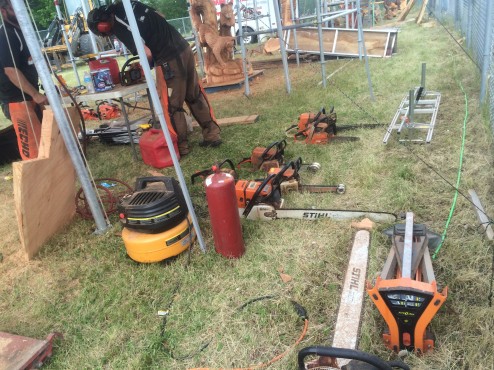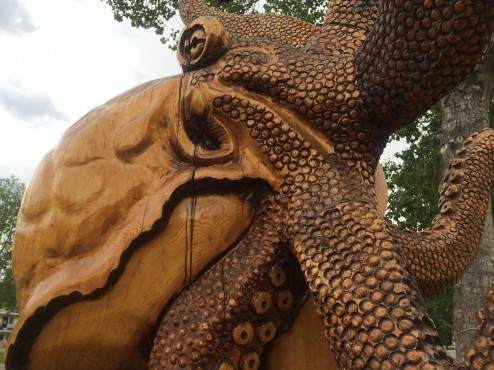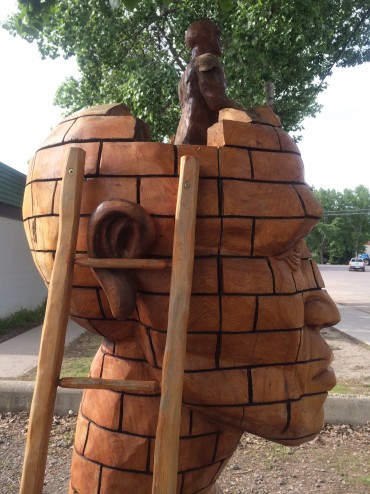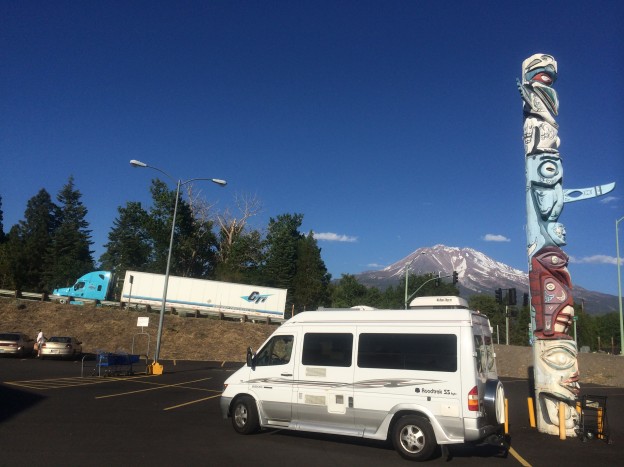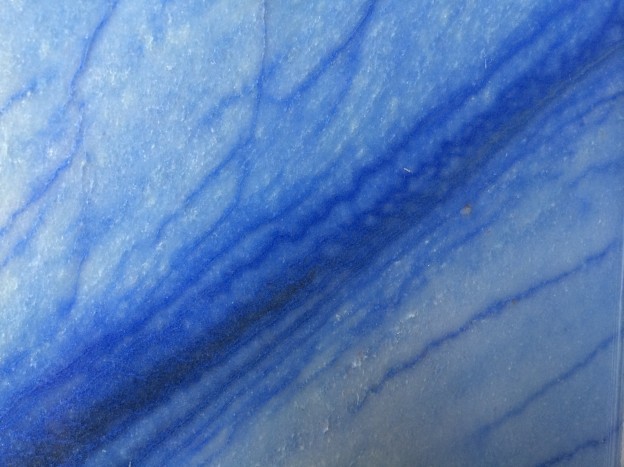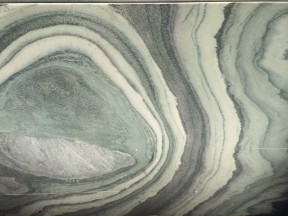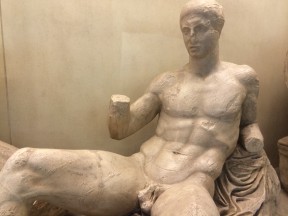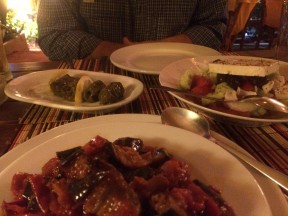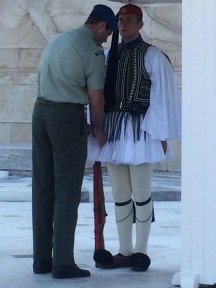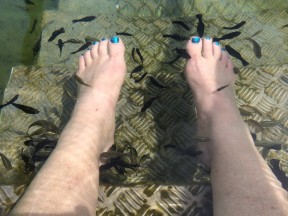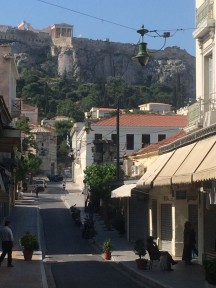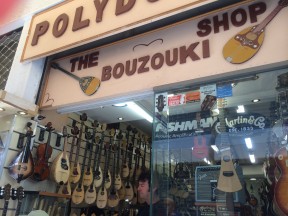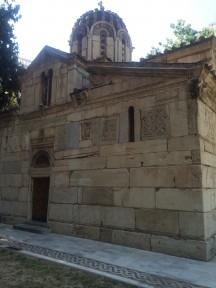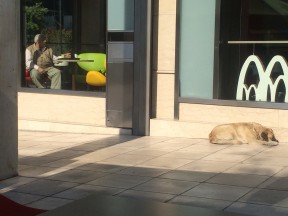This DC-3, a workhorse in the Yukon for years, went nose down twice, skidding the icy runway, and landing in too deep snow using tires instead of the attachable skis. It also sunk once when it landed on melting lake ice, and broke through. Now it swings in the wind outside the Yukon Transportation Museum.
Inside, the museum documents the myriad transportation options relied on in this harsh winter environment. My favorites are the businessmen waiting in Whitehorse for their “taxi”, a dog team….
The arctic wind often blows upriver allowing this enterprising fellow to dispense with the dog team and hoist a sail on his dogsled to carry him over the ice.
Walk through history, following the wonderful poetry of Robert Service describing the lust for gold in 1987, and the hardship and risks faced in the extreme weather, herein the first and last stanzas of his most famous poem, The Cremation of Sam McGee.
“There are strange things done in the midnight sun by the men who moil for gold; The Northern lights have seen queer sights, But the queerest they ever did see Was the night on the marge of Lake Labarge (sic) I cremated Sam McGee.” “And there sat Sam, looking cool and calm in the heart of the furnace roar, and he wore a smile you could see a mile, and he said, “Please close that door. It’s fine in here, but I greatly fear that you’ll let in the cold and storm – Since I left Plumtree, down in Tennessee, it’s the first time I’ve been warm.”
One million laid plans to go to the Klondike. One hundred thousand actually set off and about thirty thousand made it. One tone of goods and a hard grind up the Chilkoot Trail got you into the Klondike. Gold seekers were required to pack and carry their goods over the Chilcoot Pass. The list of supplies required for each person weighed a ton, and included 400 lbs. of flour, 100 lbs. of beans, and 100 pounds of sugar, to name just a few. This took 40 trips of 33 miles each, equalling 2600 miles up the icy stairs in sub-zero temperatures to the summit. This took most gold seekers at least three months before they got to the Yukon River.
The novices were called “Cheechakoes”, and after surviving one winter, became “Sourdoughs”. Initially, lashed logs, canoes, and every manor of boat that could survive the Class III rapids tried to float the 440 miles on the Yukon River between Whitehorse and Dawson City. We lucked out and arrived in Dawson City in time for “Yukon River Quest”, a four day race in canoes and kayaks covering the same distance. It has remained for 16 years the longest distance canoe and kayak race in the world, this year enrolling 66 teams from 13 countries. This year’s race started out in horrible conditions with high winds and 6 foot waves in Lake Laberge, the hardest part of the race even in good weather. Even with two planned safety stops, providing 10 hours of rest, 15 teams withdrew, and the rest paddled two fully lit nights and 3 full days to arrive in Dawson City.
Another grueling trip deserves mention as well. Two sweet guys from the Distrito Federale (Mexico City) rode their bikes 4,560 miles arriving here in a rain and wind storm yesterday. I know how much they (and the kayakers) appreciated the day of very intense sun we finally got today. Viva Mexico! Viva Hidalgo!

